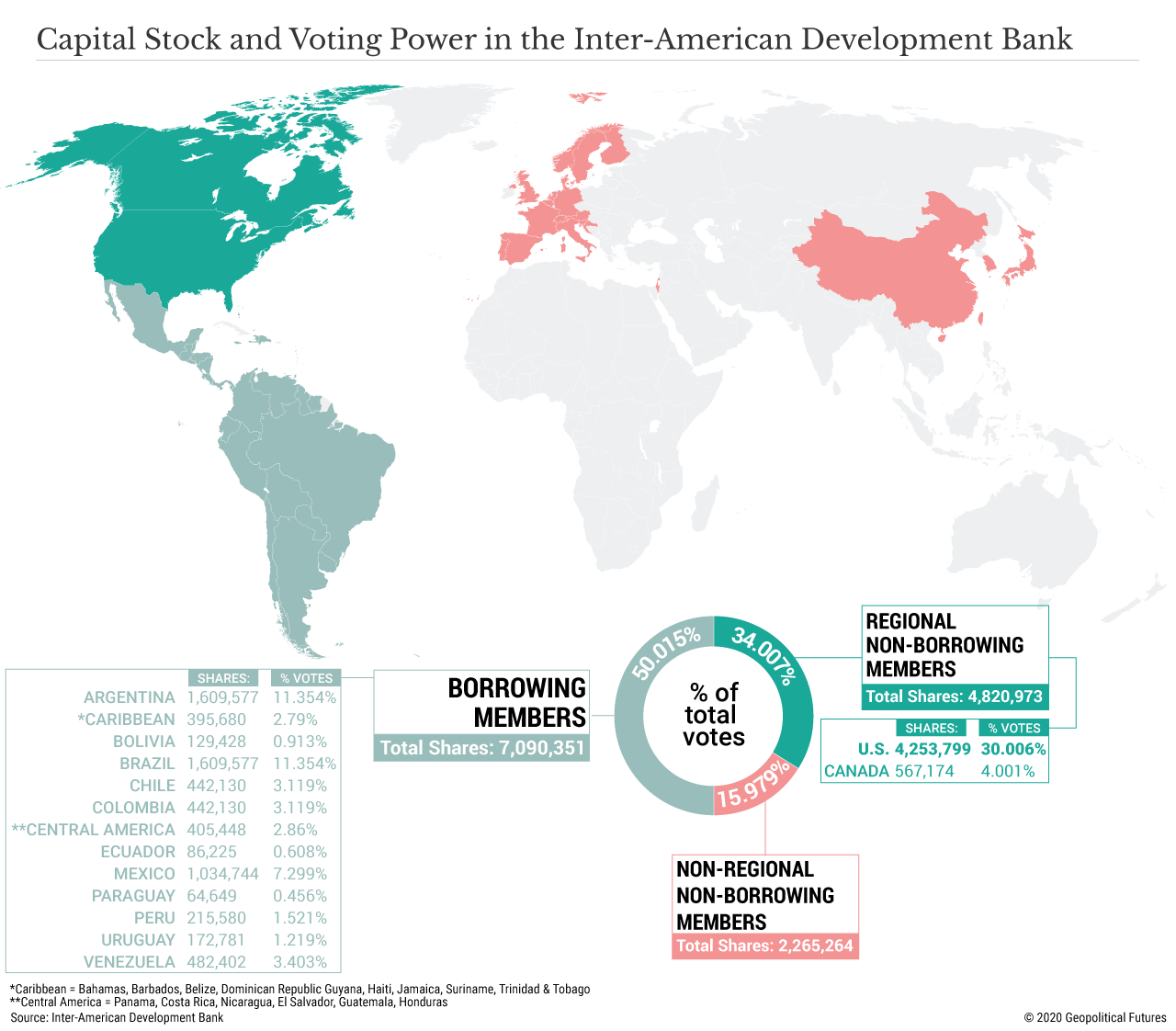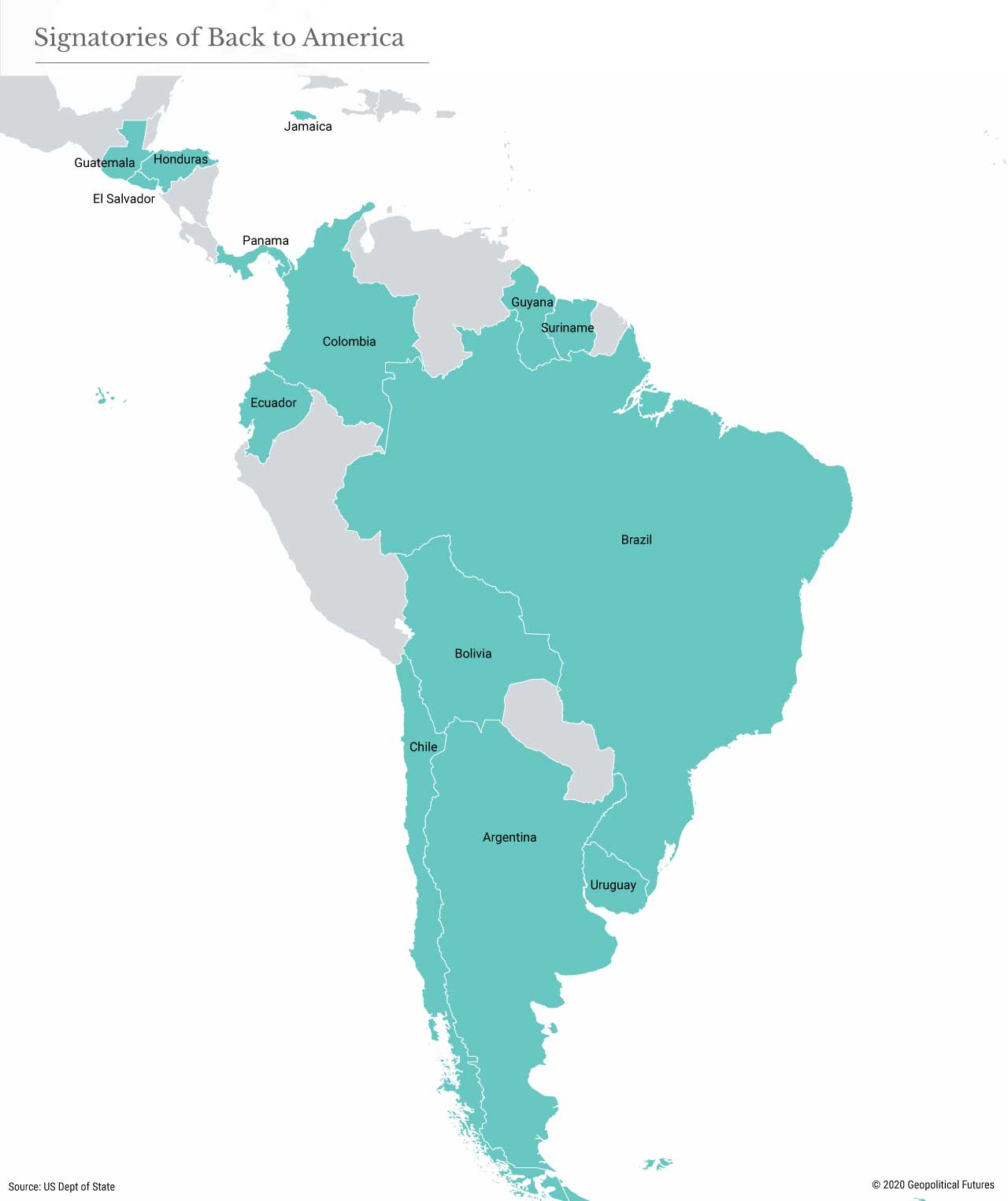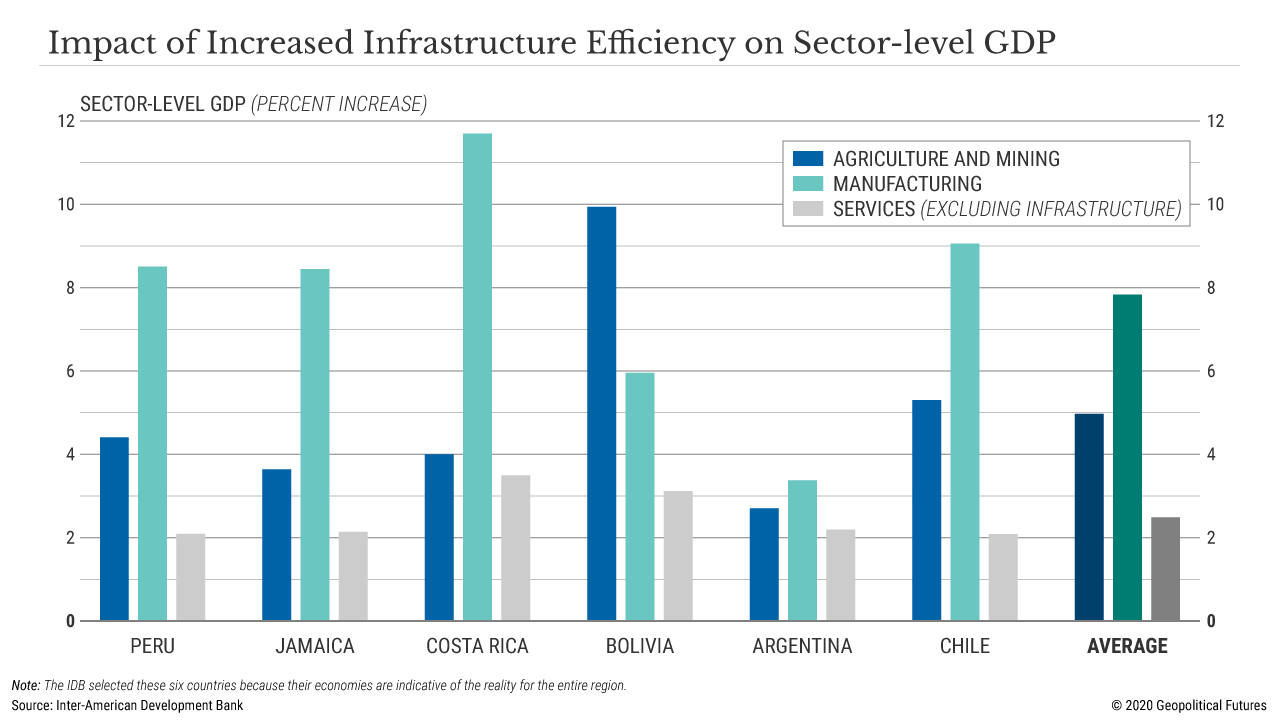A few weeks ago, the head of the U.S.
National Security Council – not a State Department official, as would
normally be the protocol – introduced the Western Hemisphere Strategic
Framework, Washington’s new economic strategy for its half of the world,
while in Miami. Then, for the first time ever, Washington successfully
lobbied the Inter-American Development Bank to take on a U.S. official as
its head – a position typically reserved for non-U.S. and non-Brazilian
members who have less voting power in the bank. Later still, Secretary of
State Mike Pompeo made history as the first secretary to visit Suriname and
Guyana.
Developments such as these belie the
ordinarily passive approach the U.S. takes to managing relations with its
southern neighbors. Washington has long held the upper hand and so has
rarely needed to tinker with a system that works in its favor. But as it
debuts its new economic strategy for the region, it will resurrect memories
for countries that have been hurt by these kinds of initiatives in the
past. The U.S. may see new-found potential in its relationship with Latin
America, but the same cannot necessarily be said for Latin America.
A National Security Issue
The increase in the United States’
commercial interest in Latin America owes largely to a shift in focus from
military conflict in the Middle East to economic conflict with China (and,
to a lesser extent, Russia).
The U.S.-China trade war has changed
supply chain security from a purely economic issue to a national security
issue. In short, China’s role as a global manufacturing hub – especially
for medical equipment, pharmaceuticals, microchips and other electronics –
is now considered a threat. Consequently, Washington has begun to consider
new locations for U.S. companies whose factories are currently in China.
With its geographic proximity, relatively cheap labor force and firmly
established ties, Latin America is an obvious candidate.

(click to enlarge)
The potential relocation of factories
is as much a geopolitical question as it is an economic one. Companies
generally go where it makes the most economic sense, but when there are
geopolitical interests at stake, it is up to the governments to create
incentives and frameworks that compel other actors to produce the desired
results.
Washington’s latest hemisphere-wide
economic initiative, Back to the Americas, means to address mutual
economic-security needs, most notably by relocating U.S. manufacturing
companies to Latin America. The relocation would be supported by U.S.
investments in infrastructure in host countries that would, in theory,
drive economic growth. At the end of July, Mauricio Claver-Carone, then the
White House senior director for Western Hemisphere affairs and now the IDB
president, said that up to $50 billion in investments could enter the
region through Back to the Americas through the participation of four U.S.
government departments as well as the U.S. Agency for International
Development, the U.S. Trade and Development Agency, the U.S. International
Development Finance Corporation and the Export-Import Bank. It builds on
the Growth in the Americas initiative, which launched in 2018 and expanded
its scope in December 2019 to focus largely on using private sector
investment in infrastructure projects to create new jobs and increase
economic growth. A key component to achieving these goals is the reduction
of regulatory, legal, procurement and market barriers to investment by host
country governments.

(click to enlarge)
The timing is hardly coincidental:
China has steadily enlarged its economic footprint in Latin America over
the past two decades. Beijing used the region to help meet its demand for
hydrocarbons, metals and food supplies. From 2000 to 2019, Chinese trade with
the region grew from $12 billion to nearly $315 billion. It is currently
the top trade partner of Brazil, Chile, Uruguay, Peru and Argentina. (In
every country except Argentina, China replaced the U.S.) According to the
Inter-American Dialogue, Chinese state loans to the region exceeded $140
billion from 2005 to 2019, though the amounts have significantly dropped
since 2015. China has also made substantial investments in mining and
agriculture, power generation, utilities and infrastructure, though again
the pace has slowed over the past three years.
The Back to the Americas initiative
aims to preserve the U.S. foothold in the region and keep foreign
competition at bay. The recently announced Western Hemisphere Strategic
Framework, however, rests on five pillars: securing the homeland, advancing
economic growth, promoting democracy and the rule of law, countering
foreign influence and strengthening alliances with like-minded partners. Relocating manufacturing to the Americas not only takes the supply chain
out of China’s hands but also helps diversify it. The finished products
made for U.S. consumption may also allow the U.S. to regain some of the
space it has lost to China in Latin America. If Washington can encourage
Latin American countries to create environments conducive to U.S. interests
by giving them money, there may be less need for Chinese financing and more
transparency with financial activities, and these countries can more easily
access funding from northern financial institutions.
What Washington Has to Offer
But U.S. ambitions will face several
obstacles. Local governments may find themselves in the uncomfortable
scenario of having to choose between Beijing or Washington, including over
how they adopt 5G technologies. Many will seek a balance that will allow
them to reap the benefits of siding with one without alienating the other.
Unlike China, the U.S. doesn’t have
state-owned enterprises that can do its bidding, or seemingly endless
discretionary spending for overseas projects. There will be some funding by
the U.S. government along with additional money from places like the IDB,
which contributes about $12 billion in infrastructure funding annually, but
private enterprise will play a greater role. The U.S. government can
incentivize companies, but it can’t force them to participate in its plans.
Companies could simply decide the market isn’t right for them.
More importantly, the U.S. strategy
requires buy-in from participating countries. This is why it contains
provisions that may meet the region’s needs. By targeting infrastructure
projects, the U.S. is effectively addressing the long-standing economic
development challenge of huge infrastructure investment gaps faced by every
country in the region. A 2019 study by the IDB estimated that the region’s
infrastructure investment gap is the equivalent of 2.5 percent of gross
domestic product (roughly $150 billion) per year. U.S investments alone
can’t solve these problems, but neither can the host countries without
large outside capital injections, which U.S. companies can offer.
Infrastructure development also
addresses the region’s interest in improving its overall trade
competitiveness. Poor transportation and logistics facilities play a major
role in raising the price of domestically produced goods to the point that
they struggle to compete in global markets.

(click to enlarge)
Furthermore, the focus on manufacturing
aims to diversify the region’s economic activity away from natural resource
extraction. Reducing dependence on commodities would inoculate local
economies to price shocks and potentially lead to higher-value goods being
produced.
Not every Latin American country has
the same relationship with the U.S., of course, and those most likely to
participate will be countries that have traditionally allied with the U.S.
or whose economies are too integrated with the U.S. not to participate. Panama and Costa Rica, for example, are already working to address domestic
regulatory measures to meet U.S. requirements, while Ecuador admitted it
has an economic need to enact reforms that will facilitate economic
cooperation with the U.S.
The poster child for what this
initiative could look like in practice is Colombia, which is predisposed to keep a close
relationship with the U.S. and has already thrown its support
behind the project. Colombia’s ambassador to the U.S. openly acknowledged
that Bogota wants to benefit from U.S. nearshoring efforts and welcomes it
as an opportunity to reindustrialize. In some ways, it has been preparing
all year. In February, the government launched a new national logistics
policy that focuses on reducing logistics costs by simplifying bureaucratic
procedures and improving road and fluvial transportation infrastructure. The objective of the plan is to incentivize foreign direct investment,
boost exports and create economic opportunities. This was followed in the
summer by new tax breaks and other measures to attract up to $11.5 billion
in non-hydrocarbon foreign direct investment by 2022. In direct response to
Back to the Americas, ProColombia has conducted a targeted campaign to
identify companies interested in moving to Colombia from China.
Concerns
The U.S. has a long and complicated
history with Latin America when it comes to cooperation, particularly when
geopolitical agendas are so closely tied to economic ones There is a camp
that looks at increased U.S. interest in the region with skepticism. Though
they share a desire to see value-added goods hold a greater share of
exports, they believe the U.S. manufacturing initiative runs the risk of
producing low-value-added exports by exploiting local workforces. There is
also concern that increased trade with the U.S. could render the region a
depository for U.S. goods. Similar initiatives in the past have damaged
domestic industries in the region, prompting governments to pursue costly
import substitution schemes and to impose strict regulatory environments to
prop up local industry and employment.
The other major issue is that there are
strings attached. The U.S. government and companies alike will be looking
for certain security and political guarantees from their partners.
Ultimately, the ability to offer attractive investment environments to U.S.
investors will fall to the Latin American governments themselves. Past
instances where countries in the region have carried out reforms to
participate in U.S.-supported economic programs ended poorly. For example,
President John F. Kennedy’s Alliance for Progress purported to enhance
economic cooperation to improve Latin America’s per capita GDP, establish
democratic governments, achieve price stability, enact land reform and
improve other economic and social planning. Washington spent $1.4 billion
annually from 1962 to 1967 on this program but failed to produce the
desired economic development. Similarly, the Washington Consensus was
introduced to the region to help solve the debt crisis and boost growth. It
required countries to implement northern-formulated, structural economic
reforms that clashed with many of the region’s political and social
systems. This led to its failure and rejection, most notably in Argentina.
Hence why this is as much a
geopolitical initiative as an economic one. The economic question can be
answered only after there are clear sectors, projects and numbers to work
with. The current economic environment favors the U.S., but complicated
pasts are hard to overlook. All governments will also have to evaluate
participation in these plans against national needs. The fact that the U.S.
has renewed interest in the region has geopolitical significance
considering the U.S. has managed to muscle through its agenda but not with
strong results.
|
0 comments:
Publicar un comentario